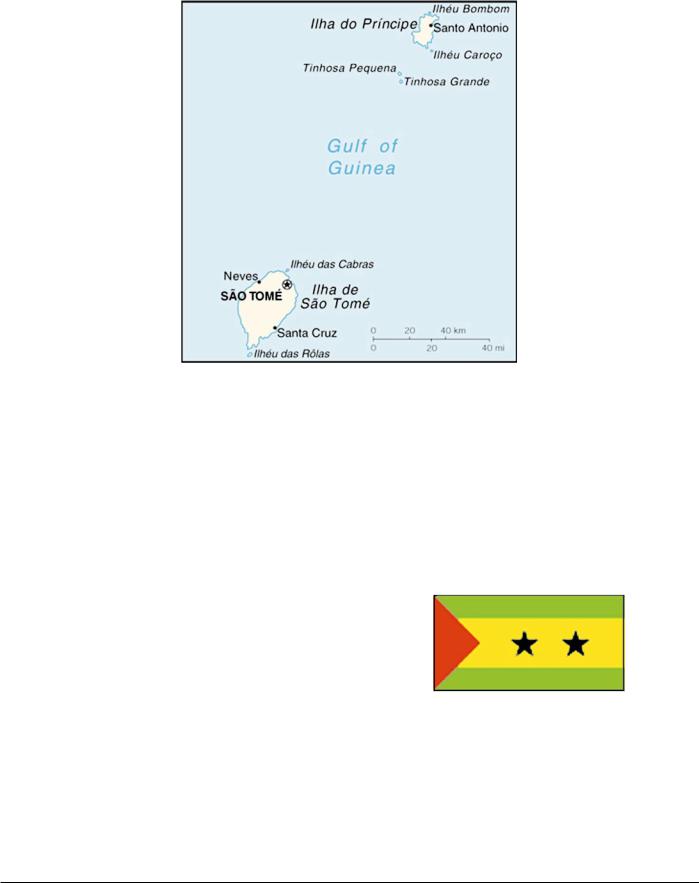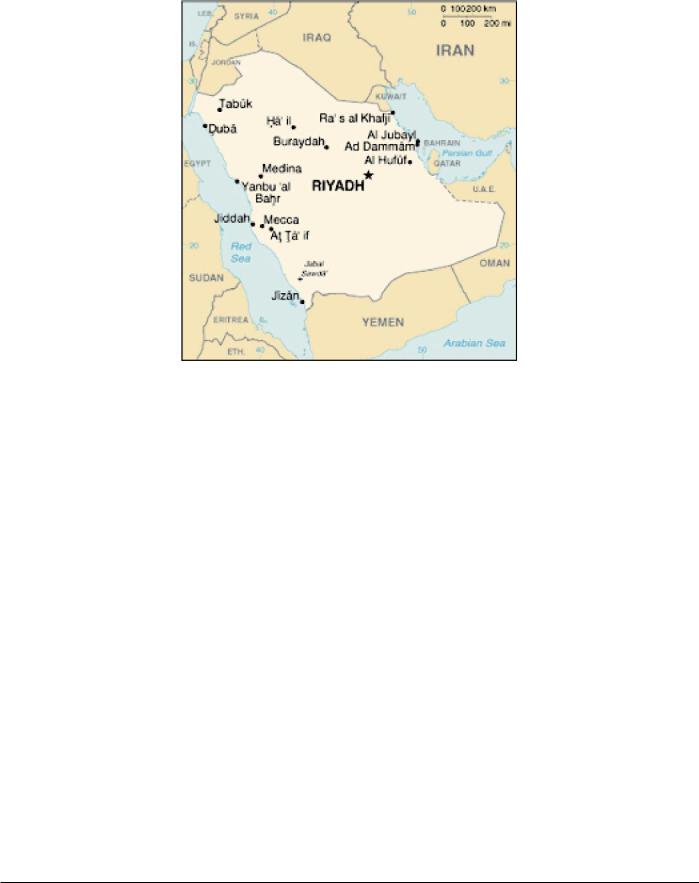
- •Preface
- •Explanatory Remarks
- •Conversion Tables
- •Abbreviations
- •Angola
- •Argentina
- •Australia
- •Bahrain
- •Bangladesh
- •Benin
- •Brazil
- •Burma
- •Cameroon
- •Comoros
- •Congo, Democratic Republic of
- •Congo, Republic of
- •Djibouti
- •Egypt
- •Equatorial Guinea
- •Eritrea
- •Falkland Islands
- •French Guiana
- •Gabon
- •Guyana
- •India
- •Indian Ocean
- •Indonesia
- •Iran
- •Iraq
- •Israel
- •Ivory Coast
- •Jordan
- •Kenya
- •Kuwait
- •Madagascar
- •Malaysia
- •Maldives
- •Mauritius
- •Mozambique
- •Namibia
- •Nigeria
- •Oman
- •Pakistan
- •Paraguay
- •Qatar
- •Sao Tome and Principe
- •Saudi Arabia
- •Seychelles
- •Singapore
- •Somalia
- •South Africa
- •South Atlantic Ocean
- •Sri Lanka
- •Sudan
- •Suriname
- •Tanzania
- •Thailand
- •Togo
- •United Arab Emirates
- •Uruguay
- •Yemen

SAO TOME AND PRINCIPE |
179 |
|
General |
179 |
Buoyage System |
179 |
Currency |
179 |
Government |
179 |
Holidays |
180 |
Industries |
180 |
Languages |
180 |
Navigational Information |
180 |
Time Zone |
180 |
U.S. Embassy |
180 |
Buoyage System
The IALA Buoyage System (Region A) is in effect. See Chart No. 1 for further IALA Buoyage System information.
Currency
The official unit of currency is the dobra, consisting of 100 centimos.
General
The two islands of Sao Tome and Principe are located in the Gulf of Guinea. They lie 275 miles and 125 miles, respectively, off the N coast of Gabon and combine to form one of Africa's smallest countries. These islands are part of an extinct volcanic mountain range, which also includes the island province of Equatorial Guinea, located to the N, and the towering mass of Mount Cameroon, rising on the W coast of continental Africa. The country also includes the islets of Pedras Tinhosas, lying close off Principe, and Ilheu Gago, lying close off Sao Tome.
Sao Tome, the larger and most mountainous island, is 30 miles long and 20 miles wide. It is oval-shaped, with elevations of up to 2,024m. Principe is 10 miles long and 4 miles wide. Both islands have prominent needle-shaped peaks and are covered by luxuriant vegetation and dense forests.
The climate is tropical, being very hot and humid, but is somewhat modified in the higher elevations. The rainy season normally occurs from October to May.
Government
Flag of Sao Tome and Principe
Sao Tome and Principe is a republic. The country is divided into the province of Sao Tome and the province of Principe. Since 1995, Principe has had internal self-rule, with a 5- member regional government and an elected assembly.
Sao Tome and Principe is governed by an directly-elected President who serves a 5-year term. The National Assembly chooses the Prime Minister, with the approval of the President. The President appoints a Council of Ministers. The unicameral
Pub. 160

180 |
Sao Tome and Principe |
National Assembly is composed of 55 directly-elected members serving 5-year terms.
The legal system is based on Portuguese law and customary law.
The capital is Sao Tome.
Holidays
The following holidays are observed:
January 1 |
New Year’s Day |
February 3 |
Martyrs’ Day |
Easter Holiday |
Variable |
Ascension Day |
Variable |
Corpus Christi |
Variable |
December 25 |
Christmas Day/Family Day |
Industries
The main industries are timber, livestock raising, palm oil processing, soap production, textiles, and fishing.
Crops include coconuts, cocoa, coffee, copra, cassava, yams, and bananas. After independence, all large landholdings were nationalized into 15 state farms. These were partially privatized in 1985 by granting management contracts to foreign companies.
Languages
Portuguese is the official language. Lungwa, a Portuguese creole, and Fang, a Bantu dialect, are also spoken.
Navigational Information
The maritime territorial claims of Sao Tome and Principe are, as follows:
Territorial Sea |
12 miles. |
Fisheries or Economic |
200 miles. |
Zone |
|
Time Zone
The Time Zone description is ZULU. Daylight Savings Time is not observed.
U.S. Embassy
There is no U.S. Embassy; however, the Ambassador to Gabon is accredited to the country on a nonresident basis and makes periodic visits to the islands.
U. S. Embassy Gabon Home Page
http://usembassy.state.gov/libreville
Pub. 160

SAUDI ARABIA |
181 |
|
General |
181 |
Buoyage System |
181 |
Cautions |
181 |
Currency |
181 |
Government |
181 |
Holidays |
182 |
Industries |
182 |
Languages |
182 |
Mined Areas |
182 |
Navigational Information |
182 |
Pilotage |
182 |
Pollution |
182 |
Regulations |
182 |
Search and Rescue |
183 |
Signals |
183 |
Time Zone |
183 |
U.S. Embassy |
184 |
General
Saudi Arabia is located in Southwest Asia and occupies most of the Arabian Peninsula. It is bordered on the N by Jordan, Iraq, and Kuwait; on the W by the Red Sea; and on the S and E by Yemen, Oman, the United Arab Emirates, and the Persian Gulf.
A narrow plain, rising in Al Hijaz and the Asir Highlands, extends along the Red Sea coast and then gradually slopes E as a desert plateau to a low-lying coastal region along the Persian Gulf. The highlands attain heights of up to about 2,750m; the desert plateau is 760 to 1,070m high.
The climate is mostly harsh, dry desert with great extremes of temperature.
Buoyage System
The IALA Buoyage System (Region A) is in effect. See Chart No. 1 for further IALA Buoyage System information.
Cautions
Special Warning 121 (Issued 20 March 2003)
Information on Special Warning 121 can be found in Iraq— Cautions.
Special Warning 115 (Issued 5 March 2001)
Information on Special Warning 115 can be found in Iraq— Cautions.
Currency
The official unit of currency is the riyal, consisting of 100 halalas.
Government
Saudi Arabia is a monarchy. The country is divided into 13 provinces
Saudi Arabia is ruled by a King in consultation with the royal family, a Council of Ministers, and religious leaders. A 120-member Majlis al-Shura (Consultative Council), headed by a chairman, is appointed by the King for a term of 4 years.
The legal system is based on Islamic law. Several secular codes have been introduced. Commercial disputes are handled by special committees.
The official capital is Riyadh. The religious capital is Mecca.
Pub. 160

182 |
Saudi Arabia |
** Also considered a Security Zone.
Flag of Saudi Arabia
Holidays
The following holiday is observed:
September 24 Unification of the Kingdom
Islamic holidays, which are subject to the appearance of the moon, include Eid Al-Fitr (End of Ramadan), Eid Al-Adha (End of Pilgrimage), Hijrah (Islamic New Year), Ashoora, and the Prophet’s Birthday.
Industries
Oil is the principal resource; oil production and oil refining are the principal industries. Other industries include petrochemicals, cement, steel, and fertilizers.
Agricultural products include dates, grains, and livestock.
Languages
Arabic is the official language.
Mined Areas
Vessels are advised that mined areas exist in the N part of the Persian Gulf. Further information should be obtained from the local authorities. Mine sightings should be reported to the naval authorities by INMARSAT (150 5612) or to Coalition naval vessels on VHF channel 13 or 16. Details of areas reported to be dangerous due to mines are also promulgated by Notice to Mariners issued by the Middle East Navigation Aids Service (MENAS) and by MARAD advisories.
Navigational Information
The maritime territorial claims of Saudi Arabia are, as follows:
Territorial Sea * |
12 miles. |
Contiguous Zone ** |
18 miles. |
Continental Shelf |
No specified limit. |
* Claims power to regulate nuclear-powered vessels in the territorial sea and to require prior authorization for such vessels.
Pilotage
Pilotage is compulsory for all vessels of 150 nrt and over, except pleasure craft, entering or navigating within or leaving the pilot zones of Saudi Arabia.
Pollution
Vessels navigating in the Persian Gulf are requested to report any oil flotsam which could affect safe navigation, as follows:
1.Damman Radio.
2.The Meteorological and Environmental Protection Administration (MEPA) Oil Pollution Control Center, Jubail through Damman Radio.
The report should include the following details:
1.Position (latitude/longitude).
2.Length, breadth, and thickness.
3.Color
4.Estimated quantity.
5.Whether liquid or solid.
Regulations
General
The Co-operation Council for the Arab States of the Gulf has issued a set of rules and regulations valid for Saudi Arabian ports. Every vessel entering a port should have a copy or obtain one immediately on arrival. These rules and regulations are extensive and extracts are given below:
1.Guidelines concerning standards of dress and behavior are laid down and strictly enforced.
2.The import of certain articles is strictly prohibited and includes such items as religious matter not pertaining to the Moslem faith; playing cards or other gambling devices; narcotics; printed matter, photographic matter, or video tapes depicting what could be considered pornographic; and alcoholic beverages, including beer, table wines, and liquor.
Any of the above items on board any vessel calling at Saudi
ports must be secured in appropriate locked storerooms which will be sealed by the authorities who may carry out inspections to ensure that the seals are intact and that none of the above articles are in use. Penalties for violations are severe and major delays to vessels can be incurred.
Vessels equipped with VHF should contact the Port Control Signal Station as soon as the vessel enters within VHF range.
Vessels more than 15 years old may not discharge cargo at saudi Arabian ports unless an approved surveyor has established that the vessel complies with all Saudi Arabian standards.
Notification
The owners of vessels bound for a port within Saudi Arabia with cargo must give preliminary notice of the vessel's intended arrival to the Port Management of the discharge port(s) by telex or cable, either directly or through the vessel's agents, on arrival at the first or sole loading port, before loading commences. Estimated time of arrival and estimated quantity of cargo by type must be given with the preliminary notice.
Pub. 160

Saudi Arabia |
183 |
On completion of loading cargo for Saudi ports, the following information must be sent to the Port Management of the discharge port(s) by telex or cable, either directly or through the vessel's agents:
1.Vessel's name and former names, if any.
2.Flag, port of registry, and call sign.
3.Length overall, grt, nrt, and dwt.
4.Expected draft on arrival.
5.Expected time of arrival.
6.Cargo particulars, including nature, weight, tonnage, and stowage by hatches; car carriers, ro-ro, and container vessels to give both number and weight in tons of each type of unit.
7.Any other cargo being carried for other destinations.
8.If dangerous cargo is being carried, the quantity and class must be indicated in accordance with the IMDG code and it must be stated whether this cargo is to be discharged or is in transit.
9.Number, position, and SWL of derricks and/or cranes, and particulars and positions of ramps.
10.The number and nationalities of passengers to be disembarked or in transit.
11.Expected requirements for bunkers and water.
12.Name of the vessel's agent.
13.Vessels intending to call at Saudi ports must submit to the Port Management a detailed list of arms and ammunition carried on board for the purpose of self-defense, at least 48 hours prior to arrival. Failure to comply with this procedure will result in heavy fines and seizure of the arms by the Saudi authorities.
A further notice of ETA is to be sent 5 days, 2 days, and 1
day prior to arrival at the port.
Tankers must also report the following information:
1.The flashpoint of any cargo to be discharged.
2.If the vessel is in ballast, whether gas-free or not, or whether in an inert condition.
3.Any other relevant information concerning special conditions, difficulties, defective equipment, or defective gear which would create special hazards when mooring, unmooring, or handling cargo.
Having complied with the above and received the necessary
permission to proceed with loading, the vessel's agent must submit to the relevant Port Management full details of all cargo on board, whether to be discharged in Saudi ports or elsewhere.
Any vessel that fails to comply with these procedures, or is found to be carrying weapons, explosives, and ammunition without prior permission will be detained.
The discharge of cargo for transshipment to another port, whether in or outside the waters of Saudi Arabia, is strictly forbidden.
Vessels calling at any commercial port in Saudi Arabia, with cargo destined for non-Saudi ports, must submit manifests declaring the nature of such cargo. Violation of this requirement may lead to the detention of the vessel.
Ship Reporting System
The Saudi Ship Reporting System (SSRS) is a voluntary service for vessels navigating in the Red Sea. Such vessels are requested to report to the SSRS center at Jeddah (HZH).
Reports should be sent every 24 hours, either between 0700 and 0730 UT (GMT) or between 1900 and 1930 UT (GMT), and consist of the following format:
Identi- |
Content |
|
fier |
||
|
||
|
|
|
A |
Vessel name, call sign, flag, and cargo. |
|
|
|
|
B |
Date and time UT (GMT) of report. |
|
|
|
|
C |
Latitude and longitude. |
|
|
|
|
E |
Course. |
|
|
|
|
F |
Speed. |
|
|
|
|
G |
Port of departure (name of last port of |
|
call). |
||
|
||
|
|
|
I |
Port of destination, including latitude and |
|
longitude, and ETA. |
||
|
||
|
|
|
K |
Port of arrival, including latitude and lon- |
|
gitude, and time of arrival. |
||
|
||
|
|
|
L |
Route. |
|
|
|
|
M |
Details of frequencies guarded. |
|
|
|
|
V |
Medical resources. |
|
|
|
|
X |
Remarks. |
|
|
|
|
Y |
Remarks. |
|
|
|
|
Z |
Crew nationality and number. |
|
|
|
Search and Rescue
A network of coast radio stations in the Persian Gulf and the Red Sea maintains a continuous listening watch on international distress frequencies.
Signals
Every vessel approaching the limits of a port must hoist the ship's signal letters (in case of VHF failure), the International code “Q” flag in accordance with health regulations; the International code “B” flag in accordance with the carrying of dangerous goods or hazardous materials, and the national flag of the country to which the ship belongs.
In addition, every vessel entering a port must display the flag of Saudi Arabia from the foremast and keep it flying at all times while the vessel is in port. The Saudi Arabian flag is properly displayed when the writing appears on top and the sword on the bottom.
Time Zone
The Time Zone description is CHARLIE (-3). Daylight Savings Time is not observed.
The capital and all major port cities keep the Zone Time. It is reported that much of the remainder of the country keeps Islamic sun time or “Arabic Time.” (All clocks are set daily to 12 midnight at sunset.)
Pub. 160

184 |
Saudi Arabia |
U.S. Embassy
The U.S. Embassy is located on Collector Road M, Diplomatic Quarter, Riyadh.
The mailing addresses are, as follows: 1. Saudi Arabia address—
P.O. Box 94309
Riyadh 11693
2. U.S. address— Unit 61307
APO AE 09803-1307
U. S. Embassy Saudi Arabia Home Page
http://riyadh.usembassy.gov
Pub. 160
